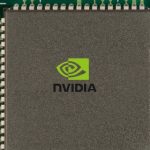Astrophysicists have made significant progress in understanding the age and formation history of Sagittarius A* (Sgr A*), the supermassive black hole (SMBH) at the center of our galaxy. Utilizing data from the Event Horizon Telescope (EHT), scientists have pieced together the timeline of this enigmatic object, estimating its formation around nine billion years ago. This finding contributes to our broader comprehension of SMBH evolution and the dynamic history of the Milky Way.
Earlier studies focused on various properties of Sgr A*, such as its mass, accretion disk, and gravitational pull, which can trap light. Past research also highlighted the role of galaxy mergers in the growth of SMBHs. However, the recent work by researchers Yihan Wang and Bing Zhang from the University of Nevada, Las Vegas, employed EHT observations to provide a more precise age and origin for Sgr A*. This builds upon previous milestones, including the 2017 EHT observation of M87’s black hole and the 2022 imaging of Sgr A* by the same telescope.
New Insights into Formation
The EHT’s imaging of Sgr A* revealed that the black hole likely spins rapidly and has a spin axis significantly misaligned with the Milky Way’s plane. This suggests a past merger event. The researchers’ simulations indicate that a 4:1 mass ratio merger with a highly inclined orbital configuration can explain these properties. They propose that Sgr A* formed through a merger, potentially with a satellite galaxy like Gaia-Enceladus.
The findings were supported by simulations predicting the effects of such a merger on Sgr A*’s spin properties. The observed misalignment and high spin rate were consistent with theoretical models of SMBH growth through hierarchical mergers. This aligns with broader astrophysical theories that posit galaxy mergers as critical events in the formation of SMBHs.
Implications for Future Research
The implications of these findings are significant for future research on SMBHs. Although current gravitational wave observatories like LIGO/Virgo/KAGRA are limited to detecting stellar-mass black hole mergers, future space missions such as LISA (Laser Interferometer Space Antenna) are expected to detect lower-frequency waves from SMBH mergers. This will provide more direct evidence and further insights into the formation and evolution of SMBHs.
The Event Horizon Telescope (EHT) provided direct imaging of the SMBH Sgr A* at the Milky Way’s center, indicating it likely spins rapidly with its spin axis significantly misaligned relative to the Galactic plane’s angular momentum.
This merger likely occurred around 9 billion years ago, following the Milky Way’s merger with the Gaia-Enceladus galaxy.
The misaligned high spin of Sgr A* indicates that it may have merged with another black hole, dramatically altering its amplitude and orientation of spin.
The research by Wang and Zhang not only provides evidence supporting the hierarchical black hole merger theory but also offers new pathways for understanding SMBH growth mechanisms. As technology advances, instruments like LISA will enable more detailed investigations into these cosmic phenomena, enhancing our knowledge about the universe’s most massive objects.
Understanding the formation and evolution of supermassive black holes like Sgr A* requires a combination of observational data and theoretical simulations. As our observational capabilities expand with future space missions, the ability to detect and analyze SMBH mergers will undoubtedly lead to more comprehensive models and theories.










